Postcards from the Swinging Bridge at Jay Cooke State Park
 The text on the back of old-school Swinging Bridge postcards tends to read the same no matter what the image: “This unique Swing Bridge spans the St. Louis River in Jay Cooke State Park, 4,000 acres of rugged picturesque beauty along the rapids of the St. Louis River, extending from Carlton, Minn., to Fond du Lac, a suburb of Duluth.”
The text on the back of old-school Swinging Bridge postcards tends to read the same no matter what the image: “This unique Swing Bridge spans the St. Louis River in Jay Cooke State Park, 4,000 acres of rugged picturesque beauty along the rapids of the St. Louis River, extending from Carlton, Minn., to Fond du Lac, a suburb of Duluth.”
This last card was mailed Aug. 12, 1936, to a Miss Brandenburger of Fort Wayne, Indiana. The message on the back reads:
Some of this fine scenery has been destroyed by forest fires. All of us are well. The children are learning many new things about this old world of ours.
Recommended Links:
Leave a Comment
Only registered members can post a comment , Login / Register Here


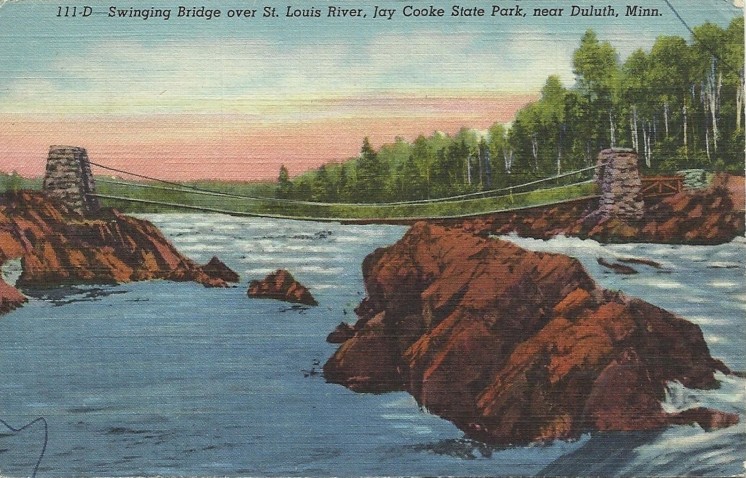
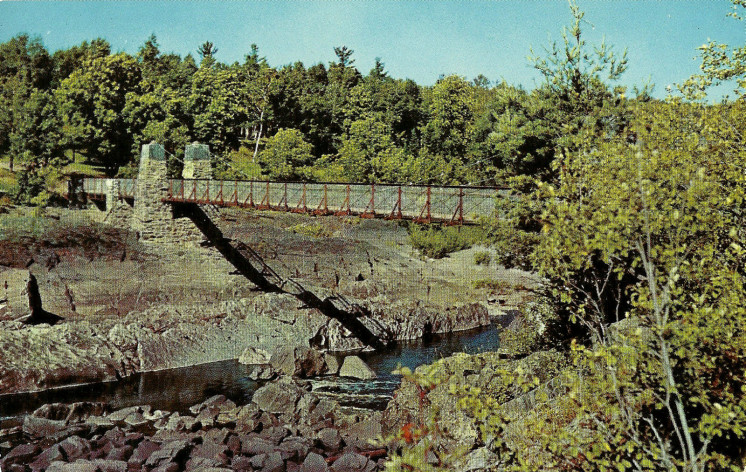
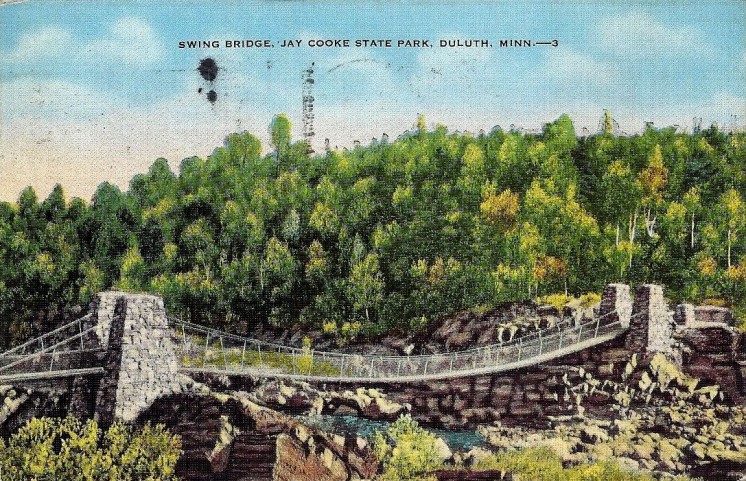
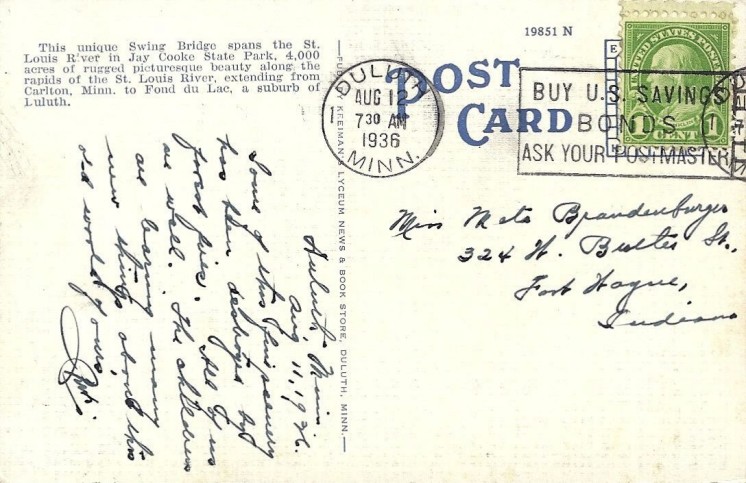
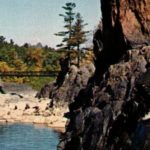
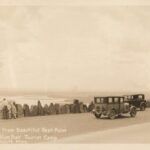
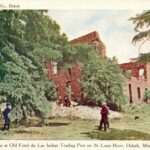
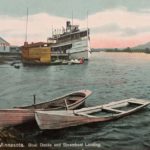





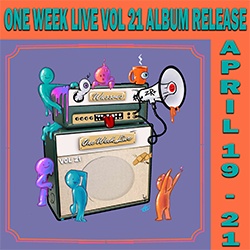

6 Comments
TimK
about 8 years agoPaul Lundgren
about 8 years agohbh1
about 8 years agoTimK
about 8 years agohbh1
about 8 years agoMatthijs
about 2 years ago